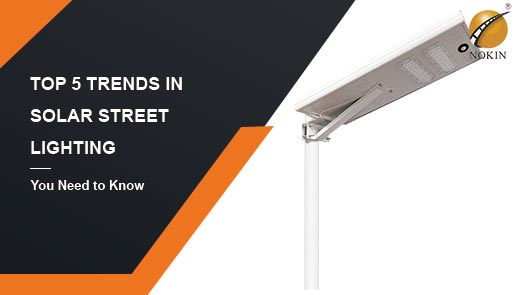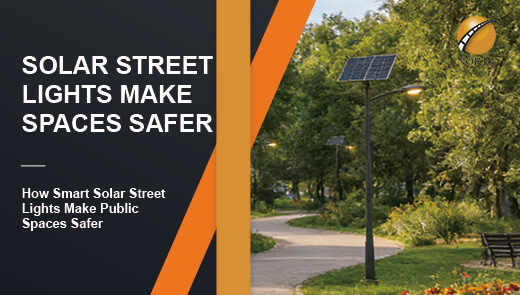Choosing the Right All-in-One Solar Street Light
In the context of the global green energy transition, integrated solar street lights have become a revolutionary choice for outdoor lighting due to their integrated design, low-carbon energy saving and high adaptability. This article focuses on the core features and selection points of these products, providing users with concise and professional decision-making reference and helping to efficiently deploy sustainable lighting solutions.
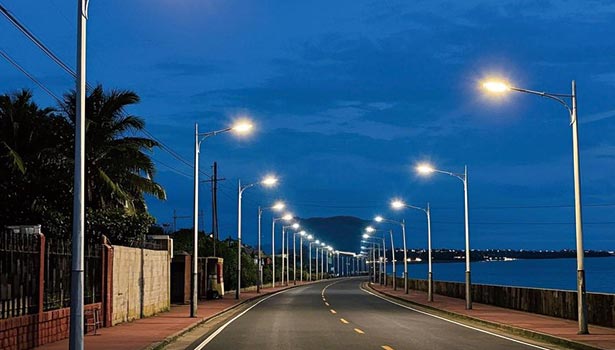
What is an All-in-One Solar Street Light?
An All-in-One Solar Street Light is a self-contained outdoor lighting system that integrates solar panels, batteries, LED lamps and controllers into a single unit. Light energy is absorbed by the solar panels and converted into electricity stored in the batteries, which is then illuminated by the LED lamps at night. The core feature of the system is its highly integrated design, which can be installed without external wiring. It is suitable for all kinds of outdoor scenarios such as streets, parking lots, parks, etc. It has the advantages of energy-saving, environmental protection, easy installation and low maintenance costs, and is especially suitable for areas with insufficient grid coverage or those pursuing low-carbon lighting.
Key Factors to Consider When Choosing an All-in-One Solar Street Light
Lighting Performance (Lumen Output)
The core function of a street light is to provide adequate illumination, measured in lumens. Lumen requirements vary significantly from scene to scene: high-frequency traffic areas such as public roads, highways, or large parking lots require 2,000-15,000 lumens to ensure visibility over long distances and uniform illumination of the roadway, while smaller areas such as residential streets and gardens require only 500-2,000 lumens to satisfy lighting needs while avoiding light pollution. In addition, high quality luminaires are designed with a double set of lumens to avoid light pollution. In addition, the high quality fixtures can improve light uniformity through the dual LED chips zoned light control technology and large-size lens design, so that the uniformity of illumination on the road surface can reach more than 0.6 (CIE standard), avoiding the problem of uneven light and darkness.
Solar Panel Efficiency
The photoelectric conversion efficiency of solar panels directly affects the power generation capacity of the system, and the mainstream types include monocrystalline and polycrystalline solar panels. Monocrystalline solar panels have higher conversion efficiency (15-22%) and are more durable, suitable for low-light or high-latitude areas; polycrystalline solar panels are slightly less efficient (13-18%), but have a more advantageous cost, and are suitable for projects with limited budgets or in temperate regions. When choosing, you need to pay attention to the protection level, and prioritize the use of IP65 and above solar panels to resist rain, sand and dust, and other environmental erosion, as well as additional consideration of salt spray corrosion resistance in coastal areas.
Battery Capacity and Type
Battery is the core component for storing energy, and its type and capacity directly determine the continuous lighting ability of the lamps in rainy days. Lithium iron phosphate (LiFePO4) batteries and lithium ion (Li-ion) batteries are the mainstream choice, of which lithium iron phosphate batteries have a longer cycle life (≥3000 times) and a wider temperature range (-40℃ to 70℃), suitable for scenes requiring high endurance and environmental adaptability; lithium-ion batteries have a high energy density but shorter cycle life (1000-2000 times), suitable for scenes requiring high endurance and environmental adaptability; lithium-ion batteries have a high energy density but short cycle life (1000-2000 times), suitable for scenes requiring high endurance and environmental adaptability.
Li-ion batteries have high energy density but shorter cycle life (1000-2000 cycles), suitable for weight-sensitive scenarios. Battery capacity should be calculated according to the actual demand, for example, if the 50W lamps need to be illuminated by rain for 3 consecutive days, the battery capacity needs to be ≥ (50W × 12 hours × 3 days) ÷ system efficiency (take 0.8) = 2250Wh, i.e., choose 24V/100Ah lithium iron phosphate battery pack.
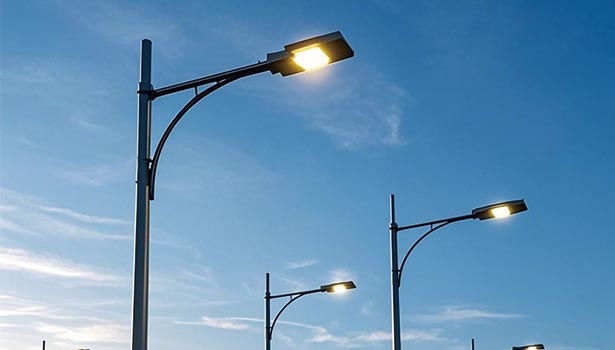
Lighting Time and Sensor Features
High-quality integrated solar street lights need to have at least 10-12 hours of full-brightness illumination, and some advanced models can automatically reduce the brightness late at night through intelligent dimming function to save energy and extend the range to more than 15 hours. In addition, light-activated auto switches are a basic feature, and some models are equipped with motion sensors that automatically increase brightness when pedestrians or vehicles are detected, further enhancing energy efficiency and safety.
Weather Resistance and Durability
Outdoor environments place high demands on the weather resistance of the luminaire, with protection ratings of IP65 or higher, in order to cope with inclement weather such as heavy rain and sand. Preferably aluminum alloy or high-grade plastic, the former is anodized to resist corrosion and improve heat dissipation, while the latter needs to be highly weather and impact resistant to ensure stable operation in extreme temperatures ranging from - 47℃ to 70℃.
Installation and Maintenance
The integrated design greatly simplifies the installation process. All components are pre-connected at the factory, and only the luminaire needs to be fixed to the pole or wall at the site, which can be operated by a single person, and the installation time can be reduced by more than 50% compared with that of traditional street lights. In terms of maintenance, the system does not require frequent overhauling of cables, and the solar panels only need to be cleaned 2-3 times a year to maintain power generation efficiency, and the battery health status needs to be checked every 5 years or so, so the overall maintenance cost is significantly lower than that of a traditional utility street light.
How to Choose the Right All-in-One Solar Street Light for Your Needs
Evaluate Lighting Needs
Defining the type and function of the area to be illuminated is the basis for selection: large roads and highways require high lumen (5000+), wide-angle lighting design to ensure traffic safety; residential and pedestrian scenes require both energy saving and comfort, choosing low to medium lumen (500-2000) and soft light design lamps and lanterns. At the same time, it is necessary to consider the height of the pole, installation spacing and other factors to ensure that the light coverage and uniformity in line with the standard.
Examine the Climate Conditions
The local climate has a direct impact on the efficiency of the solar panels and the service life of the luminaire. In low-light or cloudy areas, monocrystalline solar panels are preferred to improve light energy utilization; in high-temperature and high-humidity areas, it is necessary to ensure good heat dissipation in the battery compartment to avoid shortening the life of the battery due to high temperature; and in coastal areas or areas with high wind speeds, it is necessary to choose luminaires that are resistant to corrosion by salt spray and wind ≥ 12.
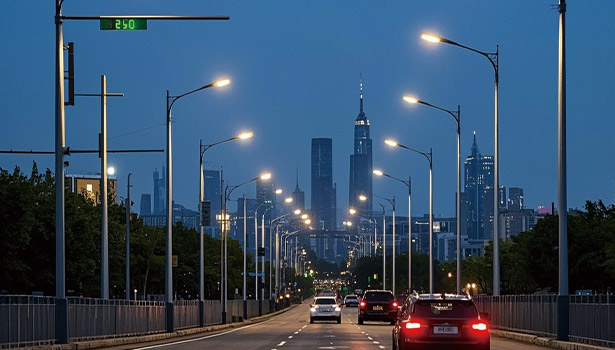
Consider Installation and Warranty
The installation method should be matched with the site conditions, for example, pole-mounted lamps need to confirm the diameter of the pole (φ60-φ140mm common), flange hole distance and other parameters to avoid interface incompatibility. Warranty policy is an important manifestation of product reliability, high-quality lamps and lanterns usually provide 2-5 years of warranty, the core components such as solar panels, batteries warranty can be up to 10 years, when purchasing, you need to focus on confirming the scope of the warranty and after-sales service response speed.
Advantages of All-in-One Solar Powered Street Light
Easy Installation and Low Cost
The integrated design eliminates the need for complex wiring and installation takes half the time of traditional street lights, reducing labor costs by more than 60%. In addition, the system does not need to be connected to the power grid and is free of electricity bills for life, so the long-term cost advantage is significant. In areas with sufficient light, the overall cost can be reduced by 5-10% over a 5-year cycle compared with traditional street lights.
Efficient Lighting and Energy Saving
The innovative design of optical system is the core competitiveness of integrated solar street light: the high brightness model adopts multi-chip array (e.g. 120pcs of 5050 LEDs) combined with 140° ultra-wide-angle lens, the radius of light coverage can be up to 15 meters (only 10 meters for traditional street light), and the uniformity of illumination on the road surface is upgraded to 0.7 (the CIE standard is 0.6), which solves the problem of uneven brightness and darkness of the traditional unilateral light distribution.
In terms of luminous efficacy, the mainstream products have reached 160-180lm/W, which is 100% higher than that of high pressure sodium lamp (90lm/W), and the energy consumption is only 1/3 of that of the same luminance, and the intelligent energy-saving strategy further strengthens the energy-efficiency: through the triple mode of light control + time control + PIR human body sensing, the luminance will be lowered to 30% automatically after the midnight hours (energy saving of 50%), and will be restored within 0.5 seconds when a pedestrian is detected. When detecting pedestrians, the light is restored to full brightness within 0.5 seconds, and with the MPPT controller (energy conversion efficiency ≥ 98%), the overall system energy consumption is further reduced by 30% compared with the fixed power mode.
Environmental Protection and Long Life
As a zero-carbon lighting solution, the annual power generation of a single integrated solar street light is about 219kWh, which can reduce 180kg of CO₂ emissions, equivalent to the carbon sink capacity of planting 10 fir trees. If the world adds 1 million such lamps, the annual emission reduction can reach 180,000 tons, helping to achieve the “double carbon” goal. Long-life design of core components reduces resource consumption: LED beads are encapsulated with ceramic substrate, with light decay ≤3% in 1000 hours and a life span of 100,000 hours (about 11 years), which is 5 times longer than that of traditional metal halide lamps (20,000 hours); Li-FePO4 batteries support 3,000 deep cycles (100% DOD), with capacity retention of ≥85% in -20℃ to 60℃ environment and no need to be replaced during the 10-year warranty period. No need for replacement during the 10-year warranty period. The whole system adopts modularized design, 95% of parts can be recycled and reused, and the cost of waste disposal is reduced by 80%.
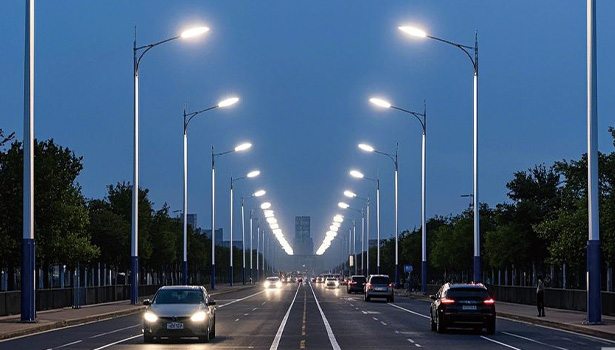
Wide Range of Applications
Extreme environmental adaptability is a significant advantage of these products: in equatorial regions (e.g. Southeast Asia), through IP68 waterproof (1 meter underwater immersion for 24 hours) and UV-resistant lenses (anti-aging test ≥ 5000 hours), it can withstand the high humidity and high salt spray erosion of tropical rainforests; in the vicinity of the Arctic Circle (e.g. Finland), under the low-temperature environment of -47 ℃, the self-heating module of the battery (power consumption ≤ 5W) can maintain normal charging and discharging, and the surface of the lamps can maintain ≥ 85% of its capacity.
Normal charging and discharging, the anti-icing coating on the surface of the lamp makes the solar panel snow automatically slide off. From the plateau highway at an altitude of 5000 meters to the tundra mining area at -30℃, the products have passed the vibration test and low-temperature start-up test, and are widely used in the scenarios of urban intelligent road, rural revitalization project, border guard post, oil mining area, etc., realizing the independent and reliable operation of “one lamp, one system”.
Common Misconceptions
Underestimation of Lumen Demand
Some projects underestimate the actual light demand, and choose low lumen lamps in the main road, resulting in insufficient illumination on the road, affecting traffic safety. The solution is to use professional lighting design tools to calculate the required lumen value according to the road width, pole height and other parameters, and to reserve a 20% safety factor.
Neglect the Quality of the Battery
Low-priced lead-acid batteries or low-quality lithium batteries in the use of 1-2 years after the capacity of a significant decline, resulting in shorter lighting hours. Priority should be given to lithium iron phosphate batteries, and manufacturers should be required to provide cycle life test reports to ensure that the capacity of the battery after 1,000 cycles ≥ 80%.
Neglecting Installation Compatibility
Failure to confirm the specifications of the pole interface, installation methods and other details in advance may lead to the lamps and lanterns can not be installed or additional customized accessories. It is recommended to measure the diameter of the pole, installation distance and other parameters before purchase, and choose lamps with common interfaces (e.g. M12 bolt holes) to reduce installation difficulties and costs.
Selection of integrated solar street lights requires comprehensive consideration of lighting performance, solar panel efficiency, battery configuration, weather resistance, installation and maintenance, and cost-effectiveness and other factors, combined with specific scenarios and environmental conditions, prioritizing the selection of high-quality components and reliable brands. Through scientific selection, not only can we realize efficient and safe outdoor lighting, but also reduce energy consumption and operation and maintenance costs, helping to achieve the goal of sustainable development. It is recommended to ask for product test reports and actual project cases before purchasing, to inspect the performance of the lamps in similar environments, and to clarify the warranty and after-sales service terms with the supplier to ensure long-term stable operation.

